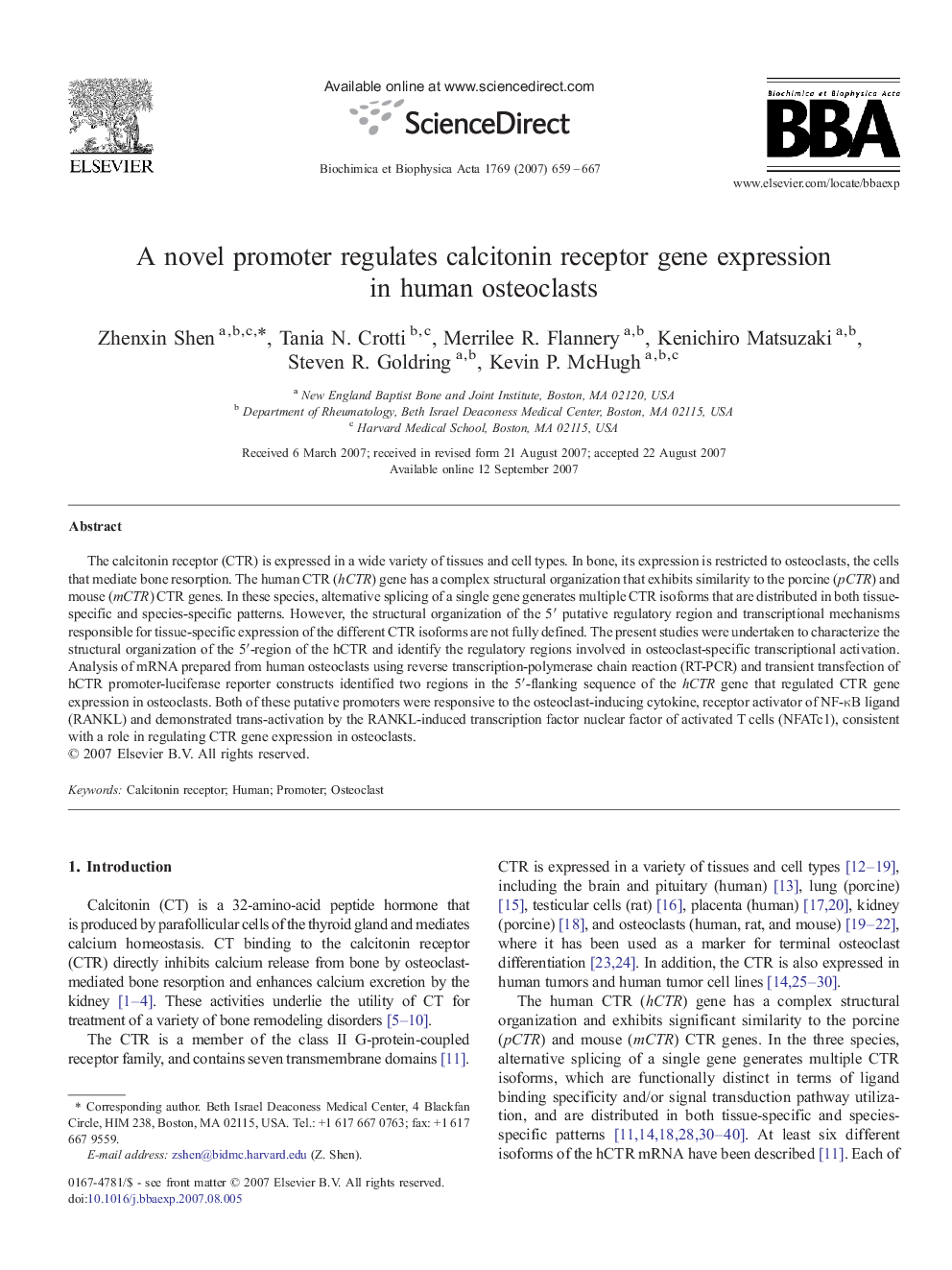| Article ID | Journal | Published Year | Pages | File Type |
|---|---|---|---|---|
| 1947092 | Biochimica et Biophysica Acta (BBA) - Gene Structure and Expression | 2007 | 9 Pages |
The calcitonin receptor (CTR) is expressed in a wide variety of tissues and cell types. In bone, its expression is restricted to osteoclasts, the cells that mediate bone resorption. The human CTR (hCTR) gene has a complex structural organization that exhibits similarity to the porcine (pCTR) and mouse (mCTR) CTR genes. In these species, alternative splicing of a single gene generates multiple CTR isoforms that are distributed in both tissue-specific and species-specific patterns. However, the structural organization of the 5′ putative regulatory region and transcriptional mechanisms responsible for tissue-specific expression of the different CTR isoforms are not fully defined. The present studies were undertaken to characterize the structural organization of the 5′-region of the hCTR and identify the regulatory regions involved in osteoclast-specific transcriptional activation. Analysis of mRNA prepared from human osteoclasts using reverse transcription-polymerase chain reaction (RT-PCR) and transient transfection of hCTR promoter-luciferase reporter constructs identified two regions in the 5′-flanking sequence of the hCTR gene that regulated CTR gene expression in osteoclasts. Both of these putative promoters were responsive to the osteoclast-inducing cytokine, receptor activator of NF-κB ligand (RANKL) and demonstrated trans-activation by the RANKL-induced transcription factor nuclear factor of activated T cells (NFATc1), consistent with a role in regulating CTR gene expression in osteoclasts.
